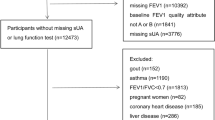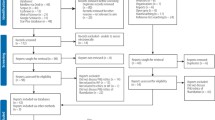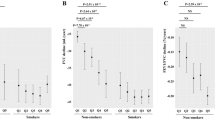Abstract
IN 1966 I published1 results showing that the normal concentration of fluoride in human serum is about one-tenth the generally accepted value—that of Singer and Armstrong. Part of the evidence supporting my results was the “at least five-fold discrepancy” that could be shown in their data2 which is most easily explained by an error in the measurement of the serum fluoride. The discrepancy involves the ratio of urine to plasma fluoride concentrations when determined by fluorine-18 as compared with stable fluoride analyses. Because the concentration of fluoride in urine is well established in contrast to that in serum where analysis is much more difficult, it is reasonable to question the latter when there is a discrepancy. Singer and Armstrong3, however, in their recent rebuttal, think that I came to erroneous conclusions because I .directed attention to only two of their analyses, which they now consider aberrant.
This is a preview of subscription content, access via your institution
Access options
Subscribe to this journal
Receive 51 print issues and online access
$199.00 per year
only $3.90 per issue
Buy this article
- Purchase on SpringerLink
- Instant access to full article PDF
Prices may be subject to local taxes which are calculated during checkout
Similar content being viewed by others
References
Taves, D. R., Nature, 211 192 (1966).
Carlson, C. H., Armstrong, W. D., and Singer, L., Proc. Soc. Exp. Biol. and Med., 104, 235 (1960).
Singer, L., and Armstrong, W. D., Nature, 214, 1161 (1967).
Zipkin, I., and Leone, N. C., Amer. J. Pub. Health, 47, 848 (1959).
Singer, L., and Armstrong, W. D., Anal. Biochem., 10, 495 (1965).
Author information
Authors and Affiliations
Rights and permissions
About this article
Cite this article
TAVES, D. Use of Urine to Serum Fluoride Concentration Ratios to confirm Serum Fluoride Analyses. Nature 215, 1380 (1967). https://doi.org/10.1038/2151380a0
Received:
Issue date:
DOI: https://doi.org/10.1038/2151380a0



